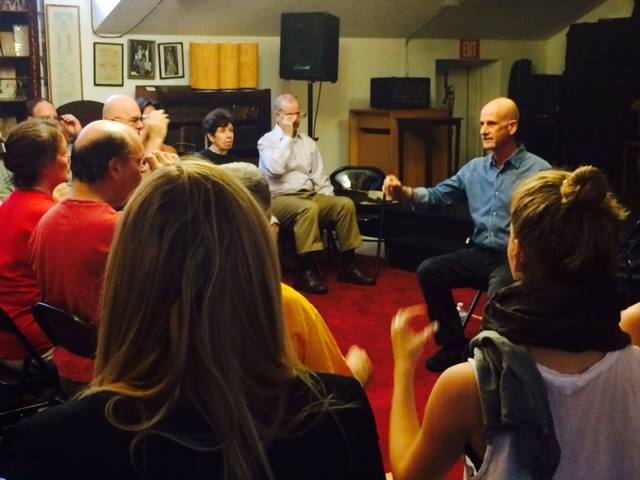
Since touch is such an important part in the Alexander Technique, this New York Times article is especially apropos. Although not specifically about the Alexander Technique, it has strong relevance. It was printed in the August 11th, 2009 New York Times by Nicholas Bakalar. Please note the last line, referring to touch: “This is a sophisticated differential signaling system that we haven’t previously known about.” Alexander Technique teachers have been using touch to convey an experience, concepts and feelings for well over 100 years. Please enjoy the following article:
Researchers have found experimental evidence that a touch can be worth a thousand words, that fleeting physical contact can express specific emotions — silently, subtly and unmistakably.
Scientists led by Matthew J. Hertenstein, an associate professor of psychology at DePauw University, recruited 248 students, each to touch or be touched by a partner previously unknown to them to try to communicate a specific emotion: anger, fear, happiness, sadness, disgust, love, gratitude or sympathy.
The person touched was blindfolded and ignorant of the sex of the toucher, who was instructed to try to convey one of the eight emotions, and both participants remained silent. Forty-four women and 31 men touched a female partner, while 25 men and 24 women touched a male partner.
Afterward, each person touched was given the list of eight emotions and told to pick the one conveyed. There was also a ninth choice, “none of these terms are correct,” to eliminate the possibility of forcing a choice of emotion when none were truly felt.
The touchers were instructed to touch any appropriate part of the body, and they chose variously to touch the head, face, arms, hands, shoulders, trunk and back.
Accurate understanding ranged from 50 percent to 78 percent, much higher than the 11 percent expected by chance and comparable to rates seen in studies of verbal and facial emotion.
The researchers also recorded a complex vocabulary of touch — a shake, a rub, a pat or a squeeze, small changes in the amount of pressure applied, variations in the abruptness of the stroke, changing rates at which the fingers moved across the skin, and differences in the location and duration of the contact.
Tiffany Field, director of the Touch Research Institute at the University of Miami was impressed with the work. “This information is very interesting, and does add to the science of emotion and communication.”
But, she continued: “It’s unlikely we’d use touching as a means of expression with strangers. It’s reserved to intimate kinds of interactions.”
Dr. Field was not involved in the studywhich will appear in the August issue of the journal Emotion.
Participants consistently chose certain kinds of touch to convey specific emotions. They often expressed fear, for example, by holding and squeezing with no movement, while sympathy required holding, patting and rubbing.
Men and women were equally adept at interpreting touch but used different actions to communicate emotions. Men rarely touched anyone’s face, and then only to express anger or disgust at women, and sympathy for other men. Women, on the other hand, touched faces frequently to express anger, sadness and disgust to both sexes, and to convey fear and happiness to men.
The evolutionary reasons for such a communication system are unknown, but the authors suggest that they may have the same origin as the social grooming rituals of other primates. The authors acknowledge that their data were limited to a sample of young Americans, and that cultural differences may play an important role.
Still, Dr. Hertenstein said: “These findings have strong implications for the power of touch. Most touches were only about five seconds, but in these fleeting moments, we’re capable of communicating distinct emotions, just as we are with the face. This is a sophisticated differential signaling system that we haven’t previously known about.”
Mark Josefsberg-Alexander Technique NYC
(917) 709-4648










Leave A Comment